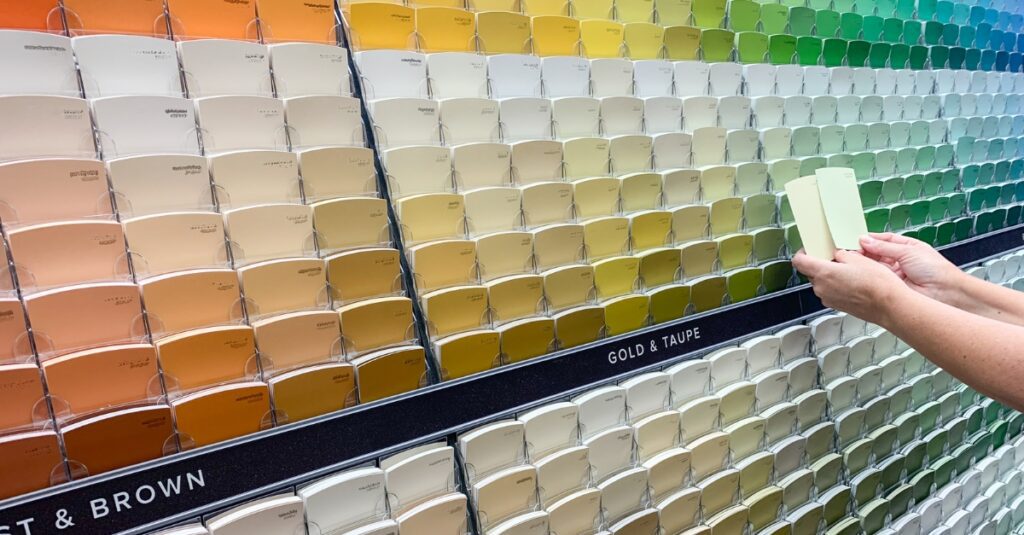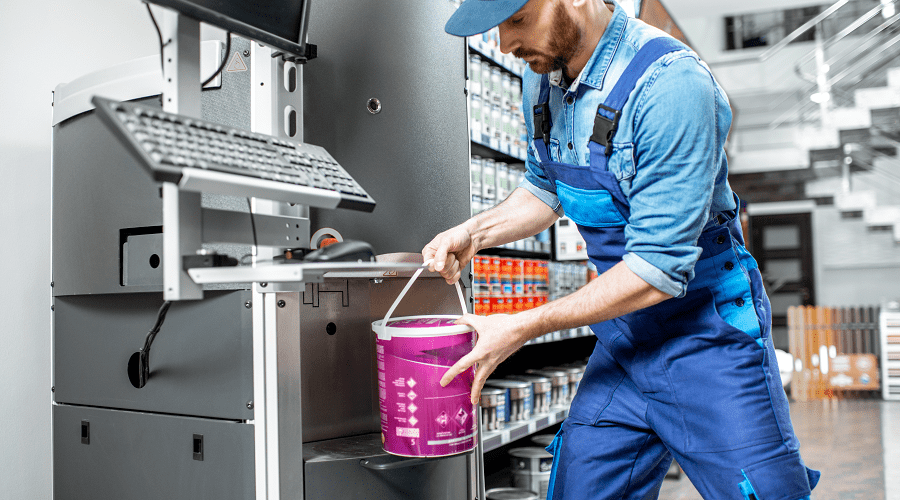Colorant Filling
1. When filling canisters, it is important to first shake the colorant before beginning to fill the canisters in the dispenser. Most colorant—especially inorganic colorant—tends to settle and needs to be shaken before refilling the dispenser. Check with the manufacturer as to recommended time and methods. It’s best to fill the canisters at the end of the day. This way, any air added will be worked out of the lines overnight via recirculation and agitation (science!)
2. It’s important to keep color levels high. This stops your colorants from drying on the canister walls or clogged lines. Dried colorant can plug up the filter which makes pumps work longer and harder to dispense large amounts of paint. This will also throw off the dispenser’s accuracy. That’s something we all want to avoid.

Cleaning
3. After all this dispensing, it’s necessary to properly clean your dispenser. Just like your home spring cleaning, periodic cleaning can go a long way. We recommend cleaning your dispenser on a regular basis. Scheduling a set amount of canisters and filters to clean is a good practice so that the whole dispenser has been serviced within a month or so. Check with the manufacturer on best practices for the model that you have.
4. It’s equally important to keep your spectrophotometer clean. After measuring all your customers’ paint samples, there can be paint on the outside of your spectrophotometer. And when there is paint on the outside, you can be sure that there is going to be paint on the inside as well. You may not see it, but as the paint dries the paint dust will fly in and affect your measurement quality.

Customers
5. When a customer is browsing paint colors in your store, they sometimes don’t even know what they are looking for. Also, it’s difficult to find that specific kind of blue in the hundreds of blue paint colors available. That’s where you can step in. As a retail paint store, it’s important to be versed in the language of color and guide your customer through all the options.
When your customer has brought a piece of fabric or another form of their color inspiration with them, use the ColorReader to immediately find the closest color corresponding to your customer’s inspiration.
6. On the other hand, when they do bring a paint sample, always ask questions. How long have they had the sample? Has it been exposed to daylight a lot? Is the sample clean? This is important for the measurement with your spectrophotometer. Other questions you may ask are: where are you planning to paint? What are you using the paint for? What the customer is planning to do with the paint can impact the quality and type of paint needed.
7. Lastly, the importance of digitally saving paint formulas is easily overlooked. But since it has so many advantages, it’s something to keep in mind when tinting. Here are our three reasons why:
- It benefits your paint department. By saving a customer’s color formulas, you can easily and endlessly re-dispense the same formula.
- With a good color matching software, you can also quickly search through thousands of electronic formulas in seconds.
- Lastly (and maybe the most important one), saving a customer’s paint formula turns them into a happy repeat customer!
Want to know how much time and money you can save with in-store color management solutions? Calculate your return on investment here.







